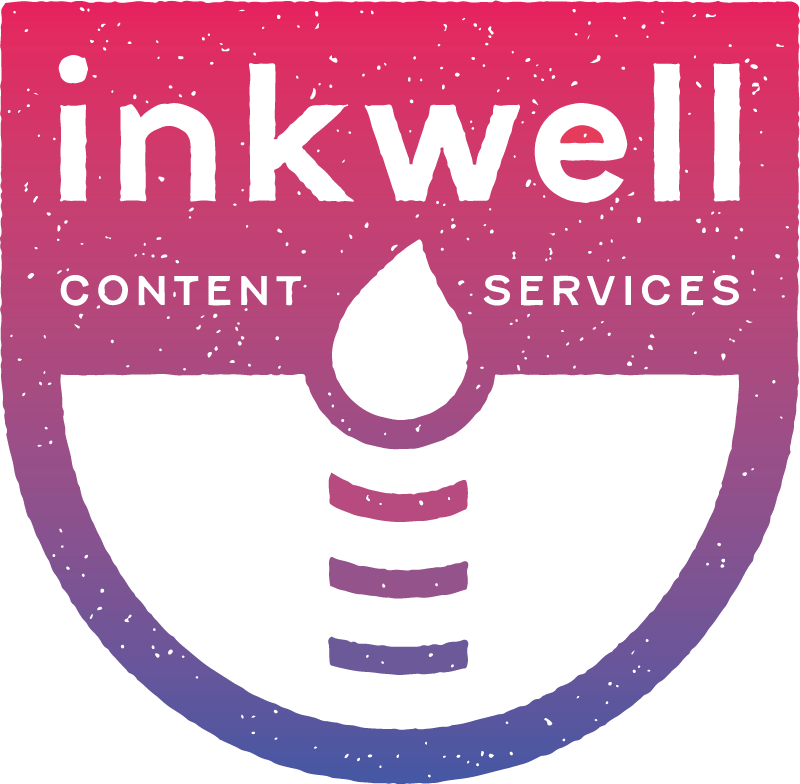We’ve all been there. Your content marketing is paying off way too much, and you’re overwhelmed with the amount of traffic and revenue it’s pulling in for your business.
Or maybe you’re a freelance writer, and you’re finding that all of the positive feedback and long-term content retainers are doing your head in.
Something needs to change, but you don’t know how to stop producing content that brings in new customers and makes your portfolio shine.
Don’t worry, I’ve got you. If you want to utterly destroy your content marketing efforts, or tank your freelance writing career, follow these steps.
Step 1. Do no planning, research, or outlining. Just let go and let God

A lot of writers make the mistake of doing a lot of research and planning before they start writing. This is a recipe for disaster if you are trying to write bad articles that achieve nothing.
Why invest time in organizing your content, so that you only have to write one draft? You could easily spend that time writing three or four rambling drafts that will infuriate your clients and customers. After this, you can publish the fifth rambling draft, sit back, and watch it totally flop.
A very important note here: DO NOT do any keyword research before you start writing. This will only inform you about what your audience is already looking for and talking about, making it way too easy to connect with them and force them to read your content.
You may come across some so-called “talented” and “successful” writers who tell you that structure is vital for SEO-driven content. Poppycock! Real writers will just start typing and forget about a logical structure.
Step 2. Find the best method to ruin the title and introduction

The title and introduction to your article are extremely important if you want to get your audience to actually read your piece. To avoid that nasty situation, there are many, many ways to ruin an introduction to any content piece you write.
First, for the title, avoid anything that explains what your content is about too directly. (This probably means you need to keep keywords out of the title too – but hopefully you don’t have any since you followed my first step!) You want people to read your title and go, “Huh?” And not “huh” in like “Huh, this article sounds interesting even if I don’t quite know what to expect.” More like, “Huh, that article sounds like gobbledygook to me and I want nothing to do with it.”
When it comes to the intro, I want you to have one important word in mind: Rambling. Long, drawn-out, rambling introductions that take forever and a day to get to the point are what readers hate.
Just take your time. Perhaps you can delve into a personal story that is only tangentially related to the topic at hand. This works very well if your readers don’t know who you are or why you matter.
You can also talk almost endlessly about introducing the topic, without actually ever directly giving the reader an idea of what to expect or what they will get out of the article.
Whatever method you choose, the idea here is to be so dreadfully boring or narcissistic that people close out your article ASAP and bring that bounce rate to a respectable figure for such bad content.
Step 3. Start building a wall of text

I can’t overstate this enough: STICK TO LONG PARAGRAPHS AND NOTHING ELSE. One of the best ways to keep people away from your content is to present them with a “wall of text.”
Walls are perfect for keeping people out of your business, and believe it or not, you can easily make one out of any piece of long-form copy. All you have to do is just write long sentences, longer paragraphs, and avoid anything like:
- Bulleted lists
- Pull quotes
- Images or video content
- Graphics to illustrate your point
- Visual calls-to-action (more on this later)
These things only serve to break up content, making it easier to digest and enjoy. And if you only take away one tip from this step, make it this: NO SUBHEADERS.
Subheaders are an easy trap to fall in for any bad writer. This is because both Google and human readers want you to use them to make the article easier to follow and scan. And making life easier for readers and search engines is not what it’s about when you’re aiming to fail.
If you do happen to accidentally include a subheader or two, make sure it’s very vague and unrelated to the content that follows. And do not put a keyword in there anywhere, because that could tip Google off as to what this article is about. Bad news for low-traffic dreamers.
Step 4. Perfect your dry, corporate tone and ramp up the jargon

The tone of your article can make or break its success. First things first, if you are writing this for a client or business, pay no attention to their brand guidelines or the tone of their existing content. Matching it well will only make them think you’re competent.
Any old bad writer can create boring content. It takes almost no effort at all. Skilled writers will find ways to make even the most complex or boring topic interesting, or they’ll use things like humor, personality, and quirkiness to connect with their audiences. Yikes.
Useless and meaningless jargon, on the other hand, is a great way to drag down your tone if you think your content might be too interesting or engaging. There are classic phrases, like “synergy” and “leverage” and “circle back.” But dig a little deeper, and I’m sure you can find some inaccessible phrases that relate specifically to the industry you are writing about. This is a good strategy, because it will alienate anyone who isn’t completely in the know already. (Build those walls!)
Step 5. Avoid calls-to-action at all costs

If you want to make sure your content doesn’t bring in any new sales, you must avoid putting in calls-to-action. These will only make it clear to your readers what you want them to do, and you may even end up unintentionally planting seeds in readers’ minds that will make them purchase later on.
It may be hard to avoid CTAs altogether, especially if you are used to using them. So if you must, just put a single link to a product at the very end of the article, where almost no one will see it. Resist the temptation to design it and make it stand out, and ideally it will have no relevance to the article it’s in to make sure those sales stay firmly at zero. That way, when your employer or client asks you to demonstrate the ROI of your work, you can just shrug and watch your relationship go down the drain.
To mix it up, you can add plenty of popups into your content to really annoy the heck out of your readers. I guarantee they will never buy anything from a website that annoys them!
Step 6. Do not edit it or ask for a second opinion

Editing is for chumps! Plus it’s boring and takes time, and might even force you to listen to feedback and grow as a writer.
Of course, you should never hire a professional content editor to look over your work. This will only remove typos and bad grammar, clunky sentences, and poor structure—all things that make up some of the best worst content out there.
Beyond that, a professional editor can force you to think more deeply about your audience and consider things you miss on your own.
It’s best to not even review the work yourself if you can avoid it. (See step one: Let go and let god.) If someone accidentally reads it somehow before you publish it, just tune out the feedback they give you. They’re only out to make your content perform well, so taking on their critiques is not the right course of action.
Step 7. When uploading, make the design as dysfunctional as possible.

Sometimes, all it takes to send your readers running for the hills is some bad design, and it’s easiest to implement this when uploading your content.
If you don’t have access to the back end of your client’s website, don’t worry. Hopefully they don’t have anyone who has enough time or competence to upload content, so it may never see the light of day. Avoid giving them advice or offering to help, as you don’t want to make their lives easier OR make sure your content looks good.
Quite the opposite. To really fail at the content game, you want to literally hurt the readers through your complete lack of aesthetic. What does this look like?
- Expand the margins of your content almost to the edges of the page, so there is no white space to relieve the eye
- NO IMAGES! Not even a banner image. Just keep it plain
- If you must use images, stick to old, outdated, and irrelevant stock imagery. Nothing designed or branded to keep readers in mind of who made this content
- Do not link to any other content on your site if you can avoid it. We wouldn’t want people engaging with even MORE of your bad content!
- Add lots of popups, ideally to completely irrelevant products or services. Make them hard to close, and DO NOT optimize them for mobile users.
- Choose a URL that is baffling and unclear. Use lots of numbers and dates so that it’s impossible to find the article again or update it later on
Step 8. Hit publish and walk away

You’re finally done writing this god-awful piece of content. Now comes the easy part: DO NOTHING! Don’t tell anyone about it. Don’t post it on Facebook or Twitter or LinkedIn or Medium. Don’t put it in your email marketing. Don’t even tell your mom about it.
The truth is, anyone who finds this article is going to hate it. That was our goal after all. But a secondary goal should be to have absolutely no one be able to find it. You’ve already achieved this by forgoing keyword research (step 1), but promoting it in any way, shape, or form means some people will inevitably click on it. Very bad if you want to fail entirely.
If you feel you MUST share it, be sure you simply post a long and ugly link to the article with no explanation, and be sure that any images you used (which you shouldn’t be using) aren’t optimized to look good on social media.
Step 9. Never return to update the content and right your wrongs

You may have heard of the disturbing trend of returning to old, unsuccessful content and working on it to make it more useful to readers. Some content marketers will tell you that this strategy works, and that they’ve turned an old piece of content into something fantastic with just a few changes.
Of course, as a failure, you won’t be doing that. Instead, you will almost forget you ever posted this piece of content at all. This should be easy to do, since no one will be reading it or commenting on it. The content piece will just sit there like a wart on your website—ugly, completely useless, and ultimately of no concern to you or anyone else.
If you’d like to create some content that actually moves the dial and brings in new customers and revenues, then you can get in touch with me, the sassy and sarcastic guy who wrote this piece.
